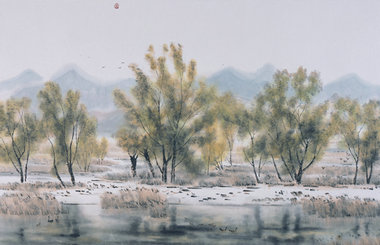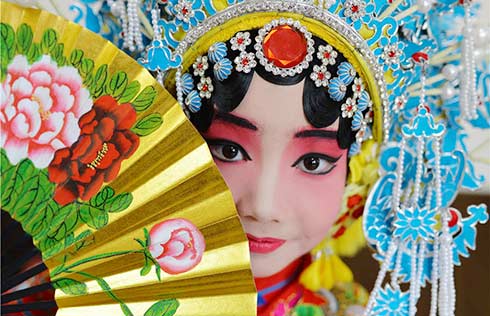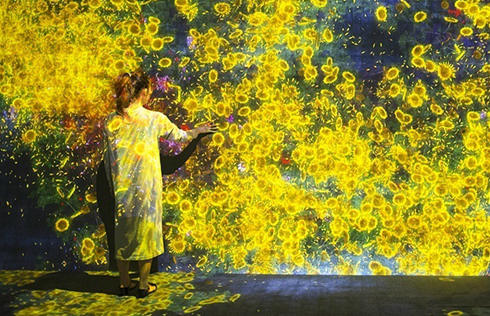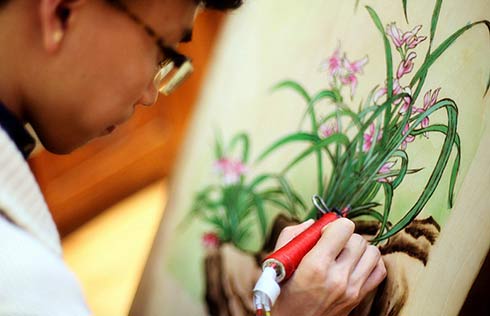

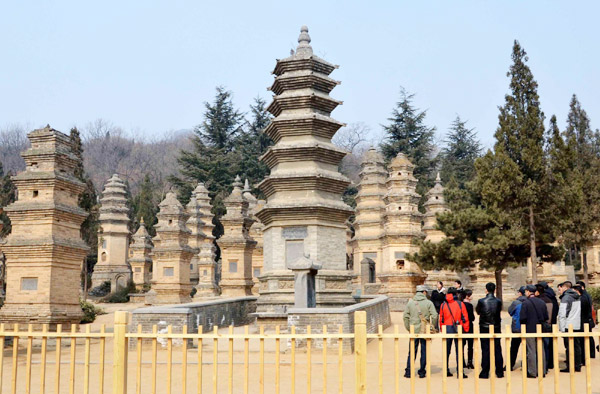 |
|
A part of the Shaolin Temple in Henan province.[Photo/Xinhua] |
As one of the ancient capital cities of China, Zhengzhou has a vast historical and cultural heritage. With more than 2,000 historic sites spread across the city, the capital of the central province of Henan has proved a hugely alluring destination for both domestic and overseas tourists.
Martial Arts
The most famous tourism attraction in Zhengzhou is its Shaolin Temple. It is a Buddhist temple built on the Songshan Mountain in Dengfeng, 70 km away from downtown Zhengzhou. The Shaolin temple was founded in 495 AD by an emperor of the Northern Wei Dynasty (386-534) and was intended to accommodate the Indian dhyana master, Batuo, who had traveled to China to teach Buddhism.
In 527 AD, the 28th patriarch of Buddhism Bodhidharma arrived at the temple and introduced Chan Buddhism, which later became the dominant sect in Chinese Buddhism.
During its history of more than 1,500 years, the temple has been destroyed and rebuilt several times. Most of the current buildings were constructed during the Ming and Qing dynasties. The main buildings include the Shanmen Gate, the Bodhidharma Pavilion, as well as the Baiyi, Dizang and Qianfo Palace Halls.
According to legend, Hui Ke, a student of Bodhidharma and the second patriarch of the Chinese Chan Buddhism sect, once stood in front of the pavilion to wait for his teacher whilst the heavy snow piled to his knees.
Inside the temple, there are more than 400 stone inscriptions, written by Tang Dynasty literary figures and their successors. Kangxi, the second Qing emperor, wrote the calligraphic inscription: "Shaolin Temple", which still hangs on the Shanmen Gate to this day.
For most people, the Shaolin Temple is better known for its association with Chinese martial arts or kungfu, rather than for its link to Chan Buddhism. Yet the two are frequently combined. Practicing kungfu is a way of practicing Chan, many believe, saying: "Kungfu is the materialization of Chan, while Chan is the spirit of kungfu".
Many tourists are drawn to the temple by its great influence on Buddhism and the martial arts, including visits from a number of celebrities, ranging from the NBA star, Shaquille O'Neal, to the former president of Russia, Vladimir Putin.
Historic spots
In addition to the Shaolin Temple, Zhengzhou also has many other historic sites, each representing different aspects of different times and cultural occurrences. The most highly recommended are:
The Stellar Observatory
The stellar observatory is located in Dengfeng. About 700 years ago, during the early days of the Yuan Dynasty (1271-1368), the famous astronomer and mathematician, Guo Shoujing, built the observatory. It is the oldest observatory in China and one of the earliest astronomical observatories still in existence anywhere in the world. In 1280, Guo formulated the most advanced calendar of the time - the Shoushili Calendar.
Songyang College
Songyang College was built in 484 AD at the southern foot of Songshan Mountain. It is among the four most prestigious ancient Chinese colleges and is well known for its Neo-Confucianism practices. Several masters of Neo-Confucianism in the Northern Song Dynasty (960-1127) lectured there, including Chen Hao, Chen Yi, Sima Guang, Fan Zhongyan and Zhu Xi. The college has two of the oldest cypress trees in China, dating back over 4,000 years.
Kangbaiwan's Mansions
Kangbaiwan's (Kang is the family name and "baiwan" means millionaire) Mansions are located in Gongyi, 82 km from Zhengzhou. The whole manor house area consists of 19 buildings, covering a total space of 64,300 sq m. It is a typical example of the feudalism stronghold architecture, common on the Loess plateau in northern China, during the 17th and 18th centuries. Its stone, wood and brick carvings throughout the mansion are of particular artistic value.
Du Fu's Home Place
The famous Tang Dynasty poet, Du Fu, was born in Gongyi, an area under the direct jurisdiction of Zhengzhou. The ancestral hall of Du Fu was located here. Its actual date of construction is unknown and the hall has been restored many times since the days of the Qing Dynasty.
Grotto Temple
The Gongyi Grotto Temple was first established in the Northern Wei Dynasty. It now comprises five caves, one shrine, 255 small alcoves, three large cliff-face Buddha statues, 7,743 Buddhist statues and more than 200 stone inscriptions. The adornments on both sides of the cave gate are very rare in terms of their compact design, lifelike shapes and sleek lines, making them highly distinctive relics.
Song Mausoleum
The Song Mausoleum is located in Gongyi. It is the largest group of royal tombs in central China. The Song Mausoleum has over 200 tombs. It is 15 km long from north to south and 10 km wide from east to west. The stone sculptures of people and animals in the Song Tomb are the only existing group of Song Dynasty statues in China, making them valuable relics.
Cultural tour
As Zhengzhou has such a proliferation of cultural relics, the local government has been working hard to establish them as ideal attractions for contemporary tourists. The following are some of the projects that should be high on any visitor's "must-see" list.
Huangdi's Home Place
Huangdi, also known as the "Yellow Emperor", was born in Zhengzhou. Huangdi and another tribal ruler, Yandi, are believed to be the co-founders of the Chinese nation and civilization. The local government has built a scenic shrine in Huangdi's hometown, allowing Chinese visitors to worship their ancestor. The shrine includes five separate areas: Chinese Surname Square, the ancestral hall of Huangdi, the birthplace of Huangdi - Xuanyuan Mound, an art exhibition zone and the treasure tripod zone.
Wen Temple
The Wen Temple, also known as the Confucian Temple, was first built during the time of the Eastern Han Dynasty. It was originally a place where students studied the Confucian classics. During the Ming Dynasty, its name was changed to Wen (Literacy) Temple. The major shrine of the Wen Temple features a Xieshan-style roof, with nine ridges.
Yellow River Scenic Area
The Yellow River scenic area is a national AAAA scenic spot, covering 17 sq km. In 1987, the local government began work on two statues of Yangdi and Huangdi by the river. The two statues, which were only completed in 2007, both now stand 106 meters high.
The Shaolin Music Show
This outdoor performance consists of five segments - music of water, wood, wind, light and stone. This impressive show combines martial arts with the modern lighting and audio techniques, as well as the choral singing of Shaolin monks. A number of celebrities, including the president of the International Olympics Committee, Jacques Rogge, and the president of Singapore, S.R. Nathan, have visited the show and subsequently spoken very highly of it.
The Ancient Buildings of the Songshan Mountain
The group of ancient buildings on Songshan Mountain is the subject of a UN World Cultural Heritage application. These buildings bore witness to a number of now extinct traditions, including sacrificial ceremonies. They were also home to educational facilities in former times.
